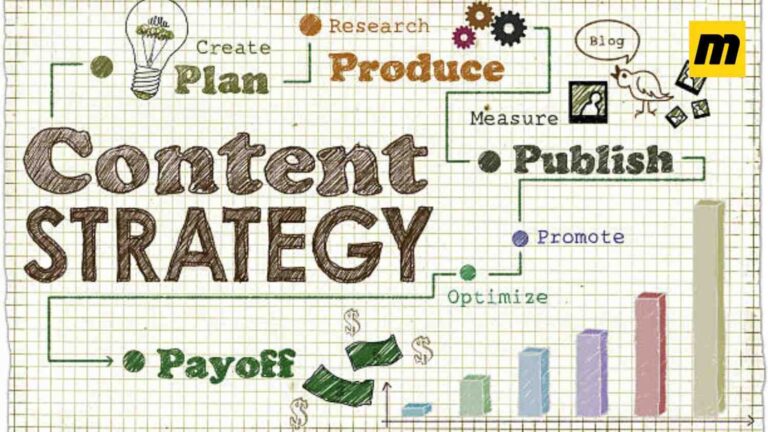Welcome to the digital age, where over 5.16 billion people are active online, representing 64.4% of the global population. The average internet user spends 6-8 hours a day on digital platforms. It presents a great opportunity for businesses to connect with their target audience.
Studies show that over 70% of businesses are heavily investing in digital transformation and digital marketing.
Digital marketing is now very competitive as many businesses want to get their share of the pie. To succeed, you must use the right digital marketing strategies. If you choose the wrong strategies, you may fail despite your efforts and investment.
This article will discuss 5 signs that your digital marketing isn’t effective, list 20 reasons why it might be failing, and offer tips on how to use digital marketing strategies successfully.
5 Signs Your Digital Marketing Strategy Isn’t Working
If your marketing efforts are drawing in people who show no real interest in your products or services, it’s a sign of misalignment. This leads to poor-quality leads and engagement that doesn’t convert.
1. Your Traffic Does Not Convert
High website traffic with low conversion rates (sales, sign-ups, interactions, etc.) is a clear indicator that your marketing efforts aren’t resonating with your audience. It’s crucial to analyze and adjust your strategies to better align with your target market’s needs and interests.
2. Ineffective Strategy Changes
If you’ve tried multiple tactics without seeing a positive impact on conversions or engagement, it’s time to reevaluate your overall strategy. This may indicate a fundamental flaw in your approach or a misalignment with your audience’s preferences.
3. Stagnant Revenue Growth
Digital marketing should ultimately drive revenue. If your efforts aren’t bringing financial gains, it’s a sign that your strategies may be ineffective.
4. Not Reaching Break-Even
If your marketing expenses consistently outweigh your profits, it’s a serious concern. This imbalance suggests that your strategies are not cost-effective and require a reassessment.
19 Reasons Why Your Digital Marketing May Not Be Effective and Fail
Vague goals lead to wrong strategies. Clear and specific objectives guide your marketing efforts and help measure success. Use the SMART framework to set goals that are Specific, Measurable, Attainable, Realistic, and Timely.
1. Poor Understanding of Your Audience
Knowing your audience’s needs and preferences is crucial for effective marketing. Use tools like SEMRush or Google Trends to analyze search patterns and preferences, create buyer personas, and tailor your strategies to their interests. You can also reap the benefits of AI tools in the market. Read this article to learn how to use AI in digital marketing.
2. Ineffective SEO
SEO is vital for online visibility. 53.3% of all traffic comes from organic search results.
Poorly executed SEO strategies can lead to penalties and reduced reach. Stay updated with SEO best practices and regularly review your strategies for effectiveness. To understand, if your SEO strategy is ineffective or not, conduct an SEO audit that’ll help you to optimize your SEO Strategies.
Need help in SEO? Check out Monsterclaw’s Professional SEO services.
3. Poor Content
Good content is key to digital marketing success. Your content should attract your audience by being useful, interesting, and easy to understand.
Search engines and social media can tell you whether your content is interesting and provides value. If that’s not the case, it might not reach the people you want to connect. This can lead to fewer people seeing your content online, stopping your business growth. It will make search engines and social media, as well as your audience, think less of your brand.
However, it’s also important to write in an SEO-friendly manner. Failing to have an SEO strategy in place leads to minimal search traffic. Read our comprehensive guide on SEO writing.
4. Ignoring the Customer Journey
Ignoring the customer journey is a big mistake in digital marketing. The customer journey shows how people interact with your business online before they buy something. By analyzing this journey, you can find the strengths and weaknesses in your online process and improve your marketing strategy to get more sales.
A good way to understand your customer journey is by using the AIDA model (Attention, Interest, Desire, Action). This framework will help you make digital marketing more effective.
5. Wrong Messaging
Your message should be clear, concise, and relevant. Even if you have a great digital marketing strategy, it won’t work if you’re not clear while talking to your audience. Research your content well and check it twice to make sure it’s relevant and clear.
When talking to your audience on social media or other channels, stay on topic. It’s easy to get off track, but try to keep the conversation focused.
6. Lack of Consistency
Digital marketing includes many aspects like SEO, social media, content marketing, pay-per-click (PPC), affiliate marketing, influencer marketing, and email marketing. Each area needs you to be consistent and committed. You can’t start a campaign and then suddenly stop or switch to another.
Consistency is crucial, especially in SEO, social media, and content marketing. Inconsistent digital marketing can cause problems, hurting your online presence and brand reputation. If your branding is inconsistent, it will not be able to attract branded searches on search engines.
7. Ignoring Social Media
Social media is a powerful tool for engagement and brand visibility. If you’re not using social media in your digital marketing, you’re missing out on big opportunities.
Social media has evolved from just connecting with friends to a powerful tool for businesses to connect with customers. It lets you talk directly with your audience, understand their needs, and keep them interested in your brand. It’s a two-way communication tool that boosts your brand awareness, credibility, and sales.
8. Poor Audience Engagement
Engaging with your audience is crucial for understanding their needs and preferences. Social media promotes posts that have lots of comments, shares, and likes. It attracts new customers and keeps existing ones loyal.
You can communicate directly with your audience through chat, email, comments, and forums. This personal touch can lead to customers creating content for you, like reviews or photos, which helps your marketing.
To get more engagement. Try online surveys, games, or contests on your digital channels.
9. Inadequate Budget
A too-small marketing budget can limit the effectiveness of your campaigns. 46% of digital marketers say that lack of budget is their biggest challenge.
Before starting a digital marketing campaign, check if your budget can cover it. Imagine starting a campaign hoping to pay for it with future profits, but then not making enough money. You’d have to stop the campaign, wasting your investment.
To avoid this, make sure your digital marketing plans fit your budget. Be extra careful with SEO and PPC marketing, as they often need a lot of money. Plan wisely to avoid big losses.
10. Poor Website Design & User Experience
A user-friendly website is crucial for keeping visitors engaged and converting them into customers.
Poor design can lead to a frustrating user experience, resulting in high bounce rates. Your website should be easy to navigate on all devices.
Search engines check if websites meet certain design and user experience standards. Google ranks websites higher if they’re easy to use.
11. Neglecting Website Security
Ignoring website security can be a huge mistake. It can destroy your online presence, damage your reputation, and even cost you your business. The internet is full of vulnerabilities like hacking and data theft.
If search engines don’t find your website secure, they’ll stop showing it in search results until you fix the security problems. Also, browsers like Chrome warn users about unsafe sites and sometimes block them. This can make people lose trust in your business.
To keep your website safe, here are some tips:
- Purchase an SSL Certificate: This makes your website more secure by encrypting user data.
- Use a Secure Web Host: A good host can help protect against cyber-attacks and data theft.
- Install a Web Application Firewall (WAP): This blocks harmful traffic and threats like malware.
- Get a Strong Server Security System: This is like a powerful antivirus that protects your network and devices from cyber threats.
12. Lack of Technical Expertise
Technical skills are essential for website optimization and maintenance. Lack of expertise can lead to subpar website performance and reduced effectiveness of your digital marketing efforts. If you are not an expert yourself, it’s wise to hire one.
13. Failure to Measure Results
To know if your digital marketing is working, you need to look at the results. If you can’t measure the results or don’t know what to look for, you won’t know if your strategies are effective.
Misreading results can either make you too confident or leave you confused. Not measuring results can lead to bad decisions, wasted investment, and no business growth.
Start by focusing on key digital marketing metrics like:
- Impressions
- Click Through Rate (CTR)
- Conversion Rate
- Search Volume
- Website Traffic
- Bounce Rate
- Monthly Recurring Revenue (MRR)
- Customer Acquisition Cost
- Customer Retention Rate
If you’re not sure how to track these, tools like Google Analytics, Google Search Console, Microsoft Clarity, and Bing Webmaster can help. These tools automate data tracking for your website and social media.
Google Search Console is great for SEO and PPC stats like search traffic and CTR. For more detailed SEO metrics, tools like Ahrefs, Ubersuggest, and SEMRush are useful. They provide graphs, reports, and benchmarks to evaluate your digital marketing campaigns.
14. Ineffective Retargeting Strategies
If you’re spending a lot on PPC (Pay-Per-Click) campaigns but not using retargeting, you’re missing out on turning warm visitors into paying customers.
Retargeting, or remarketing, targets people who’ve already shown interest in your business, like visiting your website or adding items to their cart.
Retargeting shows these people targeted ads as they surf the web, nudging them to come back and take action, like buying something. It tracks users’ online activities with cookies and shows ads based on what they’ve looked at.
You can retarget potential customers with personalized emails, social media engagement, or more PPC ads. This can create a sense of urgency to buy your products.
15. Underutilizing Email Marketing
Underestimating email marketing is a big mistake. Email marketing is a major player in revenue generation. Over 80% of businesses use email marketing to get and keep customers.
To boost your email marketing campaigns:
- Send personalized emails with strong calls to action.
- Automate emails for instant actions, like reminding customers about wishlist items or unfinished purchases.
- Send regular newsletters to subscribers interested in specific products or services.
Using email marketing well can significantly increase conversions and help you gain and retain customers.
16. Lack of Marketing Automation
Automating routine marketing tasks can improve efficiency and response times. For example, sending purchase receipts by email after each sale is a must. Manually doing this for every customer is impractical and time-consuming.
Neglecting automation can lead to missed opportunities and inefficient use of resources. More importantly, it increases your costs as you may need to have dedicated personnel to carry out tasks that can easily be automated.
For more on automating digital marketing, check out our article on B2B Marketing Automation.
17. Weak CTAs
A Call to Action (CTA) is key in getting your audience to take action- like filling out forms, subscribing to newsletters, visiting a page, or buying a product. A good CTA guides them through your digital channels and encourages them to convert.
If your CTAs aren’t clear or well-placed, or if they confuse your audience, they won’t work. Bad CTAs can drive away potential customers. A strong CTA builds rapport with potential customers and helps you track and measure results, like conversions and leads.
You should use CTAs on all marketing channels – your website and social media for example. They can boost brand awareness, attract leads, promote learning, and increase sales.
18. Poor Customer Support & Retention
Even if your product or service is great, you won’t succeed without great after-sales support. Studies show that 50% of customers might go to a competitor after one bad experience, and this can rise to 80% after multiple bad experiences.
To retain your customers and attract new ones, focus on responsive and efficient customer support. Make sure all customers, potential and current, get top-notch support.
19. Not Focusing on Video Marketing
According to Google, over 50% of all consumers watch videos to choose a brand or product, and 55% of online shoppers watch videos before buying.
Videos are popular because they’re engaging and easy to access, compared to so than reading blogs or case studies. They’re especially useful for guides or tutorials, helping viewers visually get solutions to their problems.
Video marketing can make your online presence stronger, leading to more sales and conversions.
Broken Digital Marketing Strategy- Let’s Make it Shiny?
Avoid the aforementioned digital marketing mistakes we’ve highlighted to boost your marketing strategy’s effectiveness.
For more complicated issues, or if you want to elevate your digital marketing to the next level, our team is here to help.
With 15 years of expertise in Affiliate Management, SEO, Content Marketing, and Web Design and Development, we’re equipped to guide you to success.
Book a Free Digital Marketing Consultation for a personalized consultation and and let our experts craft a winning strategy for you!



